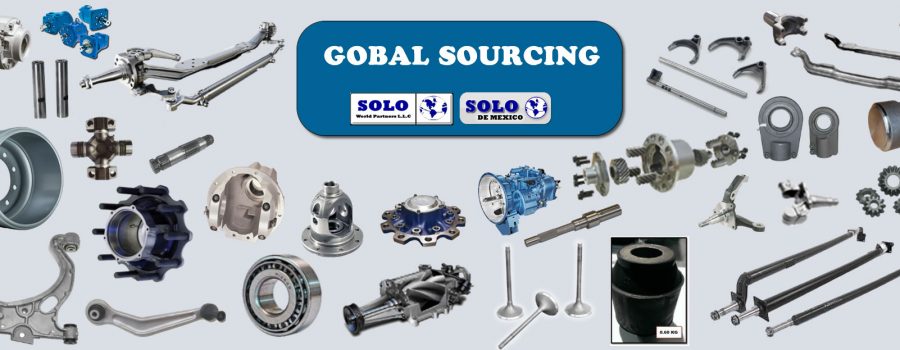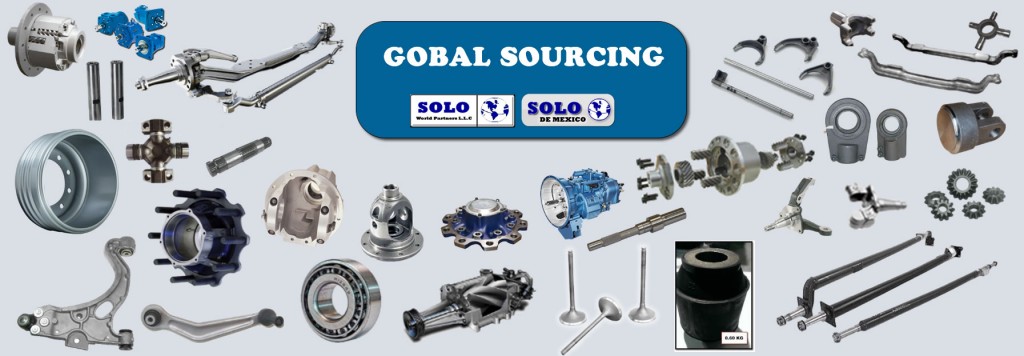Products & Capabilities Include:
FORGINGS
1.I-Beam – Forging Only
2.I-Beam – Fully Machined
3.Rear Axle (helical) Differentials
4.Front Axle Knuckles – Forging Only
5.Front Axle Knuckles – Fully Machined
6.Bevel Gears – Machined
7.Bevel Pinions – Machined
8.Different Cross – Machined
9.Universal Joints – Assembly
10.Thru Shafts – Machined
11.King Pin – Machined
12.Yokes – Machined
13.Helical Gears (machined)
14.Power Shafts (machined)
15.Park Rotor (machined)
16.Piston Pins
17.Machined Shafts (hydraulic)
18.Couplers (hydraulic)
19.End Fittings (hydraulic)
CASTINGS
1.Carrier Housing – Casting Only
2.Carrier Housing – Machined
3.Differential Case – Casting Only
4.Rotors – Machined
5.Drums – Machined
6.Hubs – Machined
MISC. Components
1.Engine Valves
2.Engine Rocker Arms
3.Tapered (carrier) Bearings – Assembled
4.Pins (forged / machined)
5.Brackets (forged / machined)
6.Shift Forks (forged / machined)
7.Shift Rails (forged / machined)
8.UCA Sub Assemblies (forged, welded, bushed)
9.Non-Driveline Trailer Axles
10.Rubber / Metal Bushings
11.Superchargers
12.Turbochargers
13.Aluminum Castings
14.Aluminum Forgings
15.Trailer Axles
Global sourcing is the practice of sourcing from the global market for goods and services across geopolitical boundaries. Global sourcing often aims to exploit global efficiencies in the delivery of a product or service. These efficiencies include low cost skilled labor, low cost raw material and other economic factors like tax breaks and low trade tariffs.
Common examples of globally sourced products or services include: labor-intensive manufactured products produced using low-cost Chinese labor, call centers staffed with low-cost English speaking workers in the Philippines and India, and IT work performed by low-cost programmers in India and Eastern Europe. While these examples are examples of Low-cost country sourcing, global sourcing is not limited to low-cost countries.
Majority of companies today strive to harness the potential of global sourcing in reducing cost. Hence it is commonly found that global sourcing initiatives and programs form an integral part of the strategic sourcing plan and procurement strategy of many multinational companies.
Global sourcing is often associated with a centralized procurement strategy for a multinational, wherein a central buying organization seeks economies of scale through corporate-wide standardization and benchmarking. A definition focused on this aspect of global sourcing is: “proactively integrating and coordinating common items and materials, processes, designs, technologies, and suppliers across worldwide purchasing, engineering, and operating locations (p. 304)” [1]
The global sourcing of goods and services has advantages and disadvantages that can go beyond low cost. Some advantages of global sourcing, beyond low cost, include: learning how to do business in a potential market, tapping into skills or resources unavailable domestically, developing alternate supplier/vendor sources to stimulate competition, and increasing total supply capacity. Some key disadvantages of global sourcing can include: hidden costs associated with different cultures and time zones, exposure to financial and political risks in countries with (often) emerging economies, increased risk of the loss of intellectual property, and increased monitoring costs relative to domestic supply. For manufactured goods, some key disadvantages include long lead times, the risk of port shutdowns interrupting supply, and the difficulty of monitoring product quality. (With regard to quality in the food industry, see Roth et al. (2008).[2]).
International procurement organizations (or IPOs) may be an element of the global sourcing strategy for a firm. These procurement organizations take primary responsibility for identifying and developing key suppliers across sourcing categories and help satisfy periodic sourcing requirements of the parent organization. Such setups help provide focus in country-based sourcing efforts. Particularly in the case of large and complex countries, such as China, where a range of sub-markets exist and suppliers span the entire value chain of a product/commodity, such IPOs provide essential on-the-ground information.








